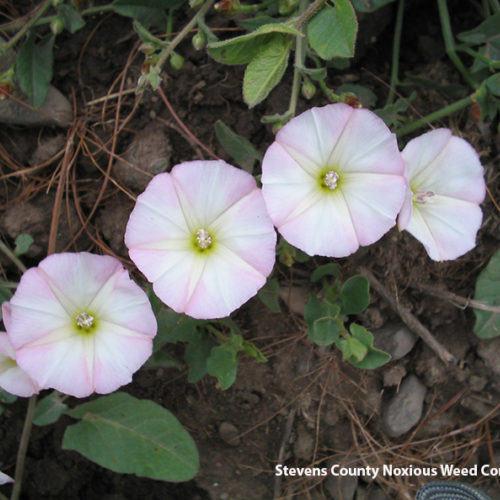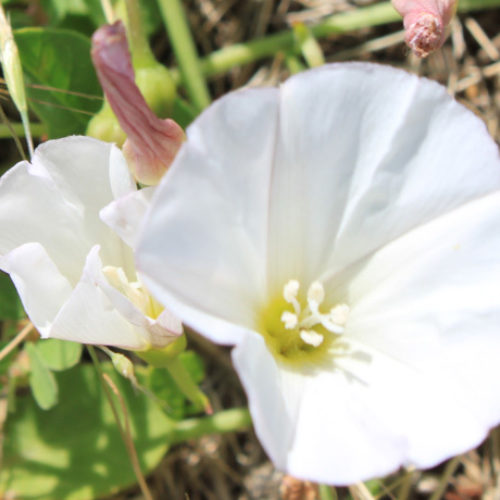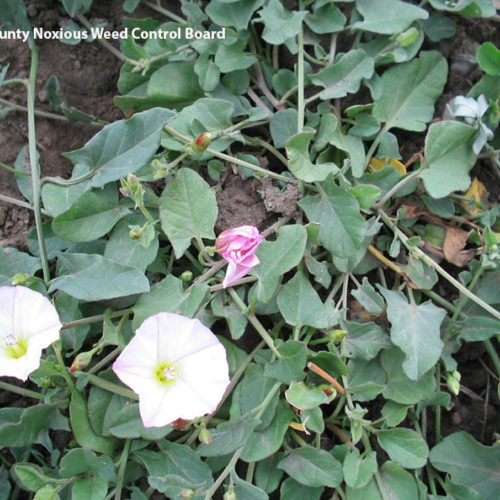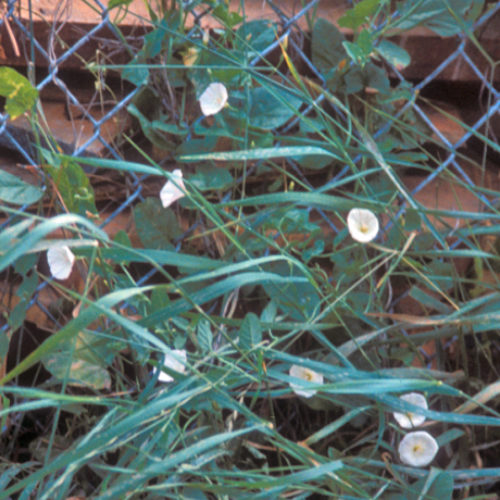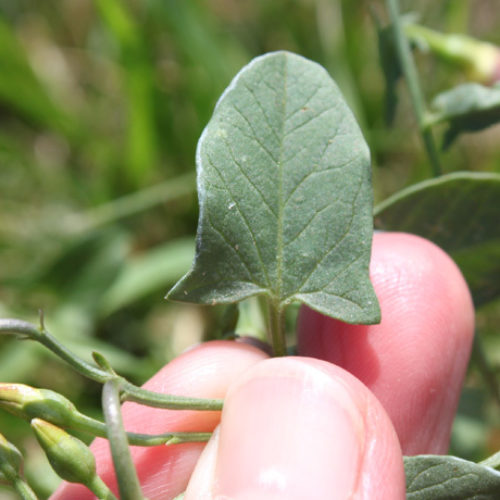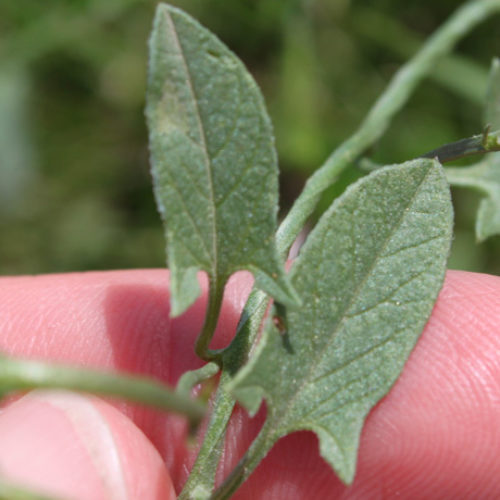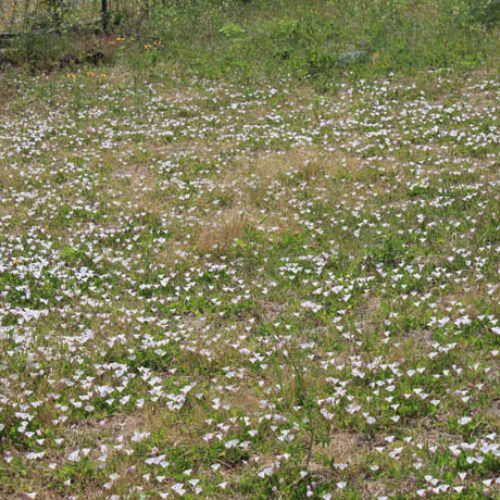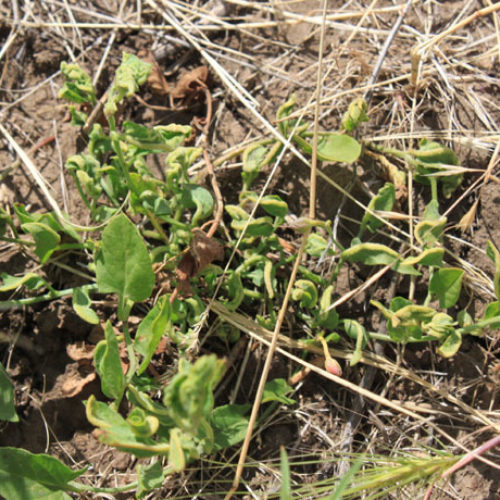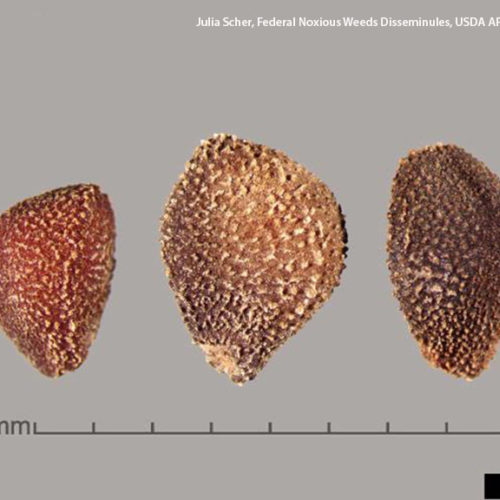Field Bindweed
Convolvulus arvensis
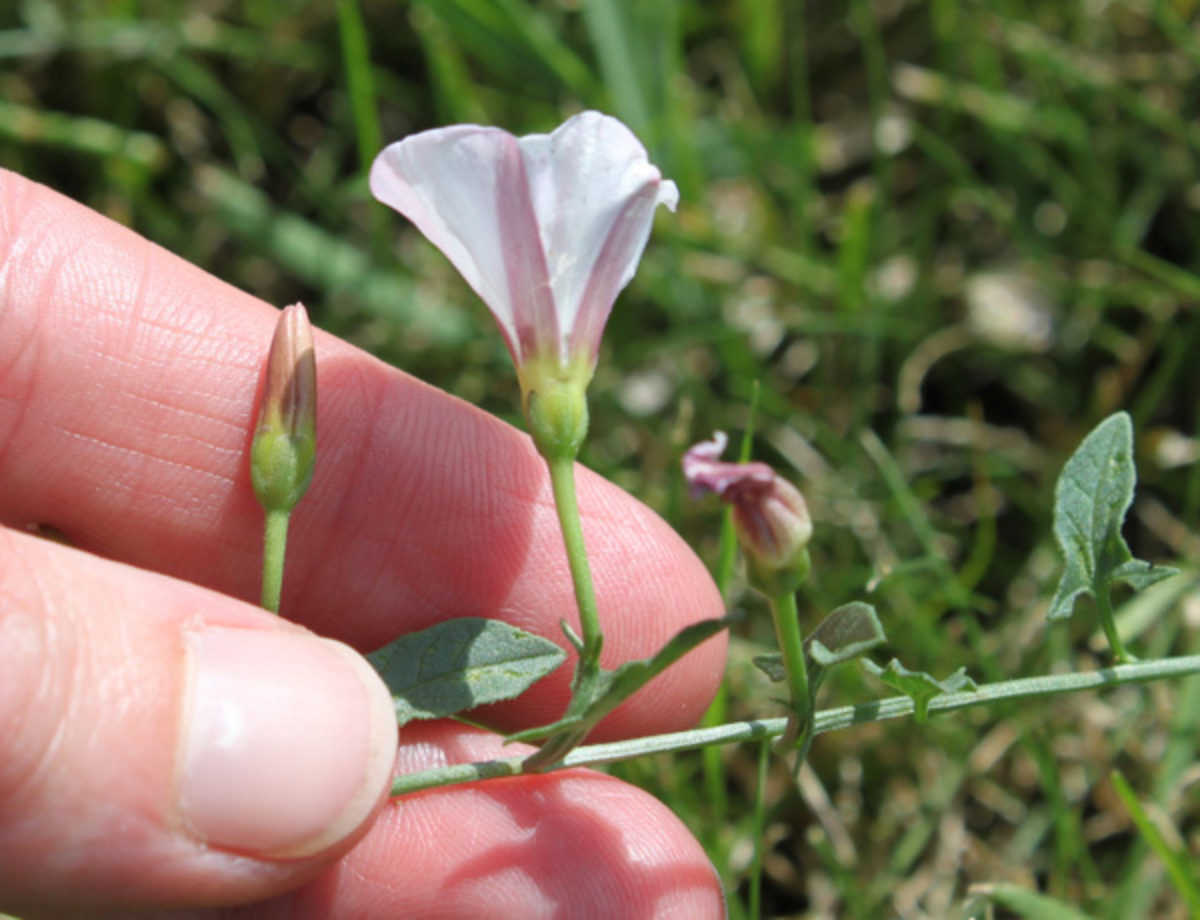
Family: Convolvulaceae
Other Common Names: small bindweed, lesser bindweed, common bindweed, wild morning-glory
Weed class: C
Year Listed: 1988
Native to: Europe, Asia and Northern Africa
Is this Weed Toxic?:
not known to be
Why Is It a Noxious Weed?
Once established, field bindweed is nearly impossible to fully eradicate. It outcompetes native plants species and can reduce crop yields. It forms an extensive root system, often climbing or forming dense tangled mats.
How would I identify it?
General Description
It is a perennial herbaceous plant with creeping and twining stems that grow along the ground and up through other plants and structures. It has an extensive system of rhizomes that can grow deep into the soil.
Flower Description
Flowers are bell or funnel-shaped, white to pinkish and approximately 1 inch in diameter. They have 2 small bracts located 1 inch below the flower.
Leaf description
Leaves are alternate, more or less arrowhead-shaped and have pointed or blunt lobes at the base.
Stem description
Stems are perennial and deciduous, growing along the ground and twining around and through other plants, to around 6.5 feet in length.
Fruit Seed Description
Seed in a small capsule, about ¼ inch in size.
May Be Confused With
Hedge bindweed, Calystegia sepium, also called morning glory is similar looking but has larger leaves and flowers. See the UW Herbarium image database pictures of hedge bindweed here.
Where does it grow?
It can grow in a wide range of conditions from full sun to full shade and is drought-tolerant. It is found in ravines, greenbelts, forested parks and farmlands as well as residential settings such as driveways, flower gardens and ornamental borders. Please click here to see a county level distribution map of field bindweed in Washington.
How Does it Reproduce?
Field bindweed reproduces vegetatively from roots, rhizomes, stem fragments and by seeds that can lie dormant in the soil for up to 50 or more years. It is spread by animals, drainage water and machinery, as well as a contaminant of crop seed.
How Do I Control It?
Mechanical Control
In general, mechanical control is not a good option because plants are able to reproduce from roots, and seeds remain viable in the soil for long periods of time.
Cultural Control
Field bindweed prefers full sunlight and mesic to dry conditions. Perennial plantings may discourage establishment of field bindweed. Rotations of tall, shade-producing crops can reduce bindweed problems since the weed is not very competitive under shady conditions. Healthy, long-term stands of sod-forming grasses or dense plantings of bunch grasses and legumes can function as smother crops.
Biological Control
The bindweed gall mite, Aceria malherbae forms galls on leaves, leaf petioles, and stem tips that result in stunted plants and reduced flowering. For more information about the biological control of field bindweed, please visit WSU Extension Integrated Weed Control Project.
Herbicide Control
Please refer to the PNW Weed Management Handbook, or contact your county noxious weed coordinator.
For More Information
See our Written Findings for more information about field bindweed (Convolvulus arvensis).
Images from the UW Herbarium (WTU) image database
Lincoln County NWCB Fact Sheet on field bindweed
King County NWCB Fact Sheet on field bindweed
Cowlitz County NWCB Fact Sheet on field bindweed



